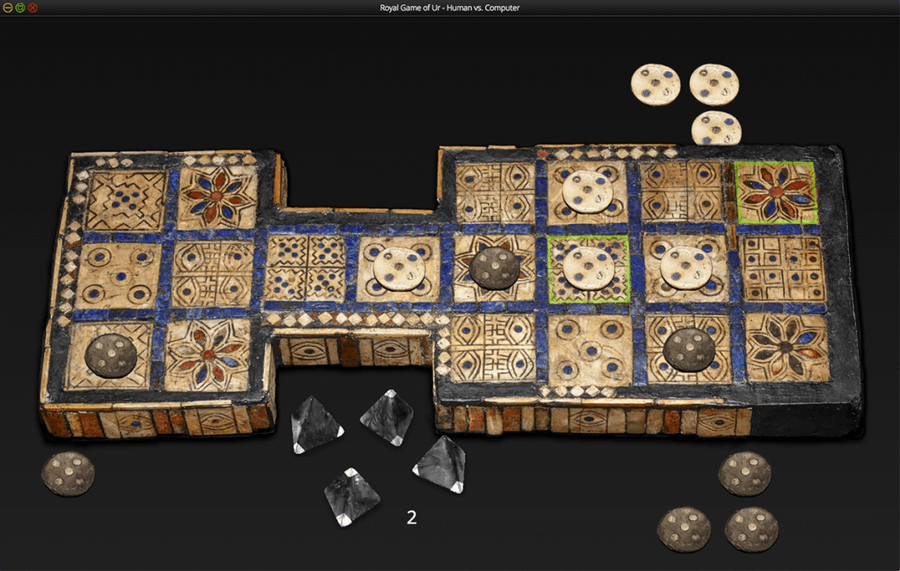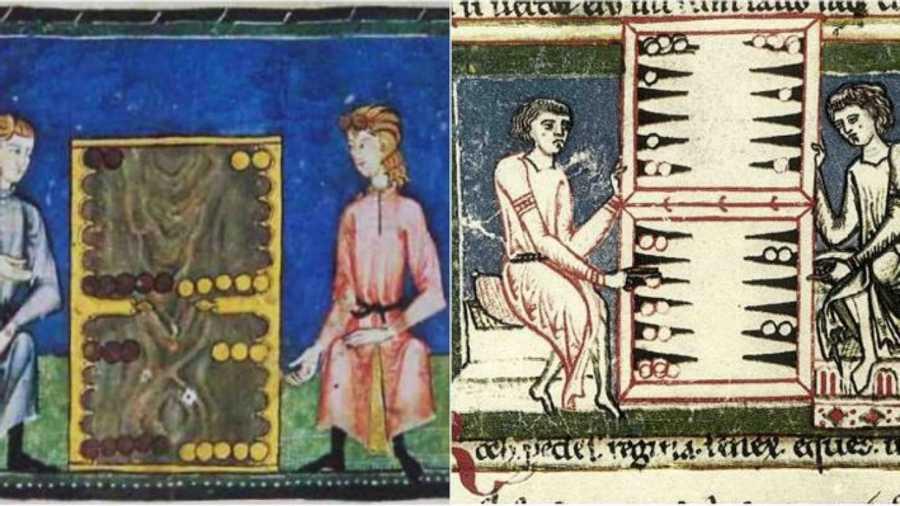The Best Board Games of the Ancient World
Curated from: smithsonianmag.com
Ideas, facts & insights covering these topics:
12 ideas
·4.38K reads
14
1
Explore the World's Best Ideas
Join today and uncover 100+ curated journeys from 50+ topics. Unlock access to our mobile app with extensive features.
Egyptian Senet
One of the earliest known board games, Senet was played in 3100 BC and loved by Queen Nefertari and the Pharaoh Tutankhamun.
Played using a longboard having three rows of ten squares each, the players used a combination of luck and strategy to rush to the end of the board while blocking the other player from doing so. The game achieved a ritualistic, crystal ball-like significance among the people of Egypt.
135
823 reads
The Royal Game Of Ur
- Also known as Twenty Squares, this 4500-year-old game, first unearthed in ancient Mesopotamia, is impressive in its complex rules and intricate design.
- The beautiful game board uses twenty squares and has a narrow bridge in the middle part, was played in Iraq, Israel, Egypt, Turkey and many other ancient civilizations.
- To finish the game as winners, players had to race their opponent to the opposite end of the board, moving pieces according to knucklebone dice rolls.
122
463 reads
The Game of Mehen
- Named after the Egyptian serpentine deity, Mehen is also known as the Egyptian Snake Game and was played between 3100 to 2300 BC.
- Six players could simultaneously play this spiral board, each having a piece crafted in the shape of a lion or a sphere.
- The rules of this game are not very clear because it lost its popularity after the decline of Egypt’s Old Kingdom and is hardly found in archaeological records.
116
369 reads
Nine Men’s Morris
Resembling the game of modern-day checkers, Nine Men’s Morris was first played in 1400 BC in medieval Europe.
It had players directing nine ‘men’ across a grid, and combining three pieces of men together captured a man from the other side. The game was mentioned in Shakespeare’s A Midsummer Night’s Dream.
116
364 reads
The Game of Tafl
A disc-shaped gaming board was used to play Tafl, a Norse strategy game having widespread played as early as 400 A.D., according to the Oxford History of Board Games.y. It was played in Scandinavia along with Britain and Ireland.
A popular variant of the game, Hnefatafl, had the objective of defending a king from a group of taflmen(a group of attackers) by attempting to secure him in one of the four corner grids.
118
318 reads
Ludus Latrunculorum
A variant of the ancient Greek game Petteia, this two-player strategy game was popular in ancient Rome. The board game had a grid of varying sizes, as documented in the first century BC.
A primitive combination of checkers and chess, Ludus Latrunculorum, also known as Latrunculi had the players moving backwards and sideways in the grid with the aim of surrounding an isolated enemy player. Its exact rules remain unclear.
115
254 reads
Patolli
- Invented in Mesoamerica, The Aztec game of Patolli was an early gambling game with cross-shaped track used to move pebbles, along with a dice made of drilled beans.
- Also called Patoliztli, this game was extremely prevalent in the Aztec capital of Tenochtitlan, played by the commons as well as the aristocrats.
- Players used to wager with their whole belongings and even their own lives in this high stakes game.
114
241 reads
Chess
Originating from the ancient Indian war strategy game called Chaturanga, the game of Chess had pieces resembling kings, queens, infantry, cavalry, chariots and elephants moving in diverse patterns on the square chessboard. The early version also had an element of chance, which was eliminated from modern chess.
A later version of the game, called Shatranj resembles modern chess and had the Queen piece as the most powerful of all pieces, reflecting on the rise of the empowered female royals of the 15th and 16th century.
134
656 reads
Backgammon
- A two-player game with thirty pieces on the board, Backgammon had the objective to get each player to remove, or ‘bear off’ all of their pieces off the board.
- Skill and luck are mixed potently in this board game featuring twenty-four triangles, with many historians writing about the game’s origins being The Game Of Ur.
- Widely played in Asia, the Middle East and the Mediterranean, Backgammon had about twenty-five versions and names like Tric-Trac, Irish, and Bräde.
113
215 reads
Go: The Game
- Arising 3000 years ago in China by the name of Weiqi, Go is a game of territorial occupation and is deceptively complex.
- Players play using stones in a 19 by-19 square grid and have to capture enemy pieces while controlling maximum territory. Japan further developed the game and it is now among the most sophisticated board games, at par with Chess.
- Go was considered one of the four arts that the Chinese scholars were required to learn and even had four schools established for its study back in the 17th century.
115
216 reads
The Game of Mancala
Also called naqala, this family of games was seen between 3000 to 1000 BC in Africa, the Middle East and southern parts of Asia.
A variant of Mancala, named Oware, is considered the most popular version where two players play with a board of rows and holes, where speed is of the essence. The players have to capture more seeds than their rival, with many cultures playing it differently. The longer the game of Mancala, the more complex it becomes.
113
202 reads
The Game Of The Goose
- This game of pure chance was one of the earliest commercially made board games.
- First referenced in Spain back in the 16th century, the game had beautiful themes, along with colourful illustrations and designs.
- The players had to roll the dice and send their respective piece in the centre of the coiled, spiral board having sixty-three spaces, with six of them having special rules. The game was popular with the Dukes and aristocrats of Spain and spread across Europe in no time.
115
263 reads
IDEAS CURATED BY
Musa 's ideas are part of this journey:
Learn more about personaldevelopment with this collection
How to strengthen your willpower
How to overcome temptation and distractions
The role of motivation in willpower
Related collections
Similar ideas
Read & Learn
20x Faster
without
deepstash
with
deepstash
with
deepstash
Personalized microlearning
—
100+ Learning Journeys
—
Access to 200,000+ ideas
—
Access to the mobile app
—
Unlimited idea saving
—
—
Unlimited history
—
—
Unlimited listening to ideas
—
—
Downloading & offline access
—
—
Supercharge your mind with one idea per day
Enter your email and spend 1 minute every day to learn something new.
I agree to receive email updates











